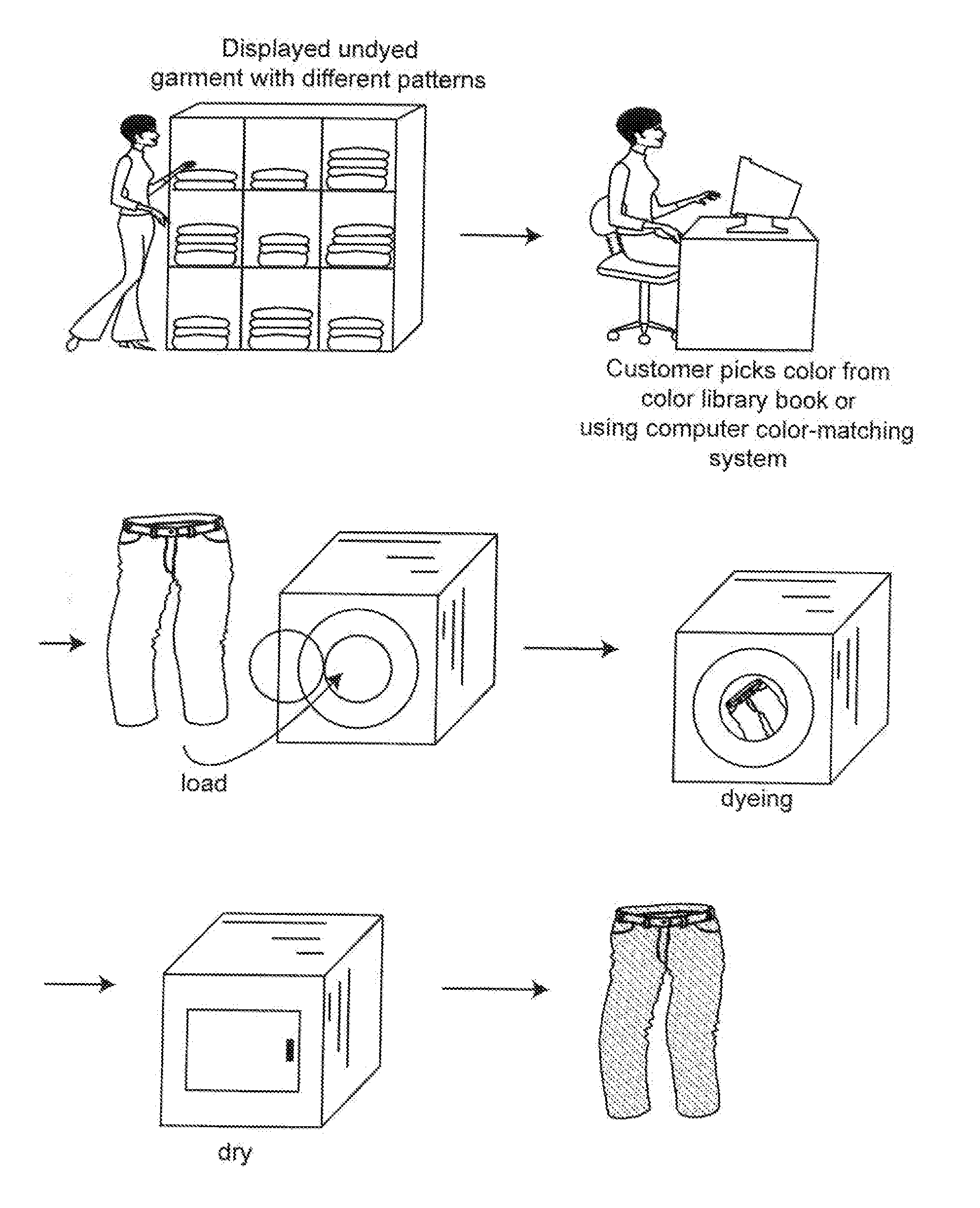Customer-Created Textiles and Customer-Oriented Garment Dyeing Machine
a technology of customer-created textiles and dyeing machines, applied in the direction of dyeing process, textile treatment by spraying/projecting, instruments, etc., can solve the problems of not being able to obtain the garment in the color, pattern, faded, etc., he or she wants, etc., to enhance the educational and entertainment experience
- Summary
- Abstract
- Description
- Claims
- Application Information
AI Technical Summary
Benefits of technology
Problems solved by technology
Method used
Image
Examples
example i
[0034]A customer chooses an undyed knit shirt having stripes made from cotton yarns containing different levels of cationic cotton. The customer chooses a red color. The shirt is loaded in a garment dyeing machine. Predissolved red fiber-reactive dye (1% on weight of garment) is added to the machine at the liquor to goods ratio of 15:1. The dyeing bath is heated to 180° F. and run for 10 min. The bath was cooled, drained, rinsed with warm water, and extracted. The dyed garment was dried using a commercial drier. The final dyed shirt is obtained with red stripes with shade gradations.
example ii
[0035]A customer chooses undyed pants woven with cationic cotton yarn as warp and natural cotton yarn as filling. The customer chooses a blue color. The pants are loaded in a garment dyeing machine. Predissolved blue fiber-reactive dye (2% on weight of garment) is added to the machine at the liquor to goods ratio of 15:1. The dyeing bath was heated to 180° F. and run for 15 min. The bath was cooled, drained, rinsed with warm water, and extracted. The dyed garment was dried using a commercial drier. The final dyed pants are obtained with blue jean look.
example iii
[0036]A customer chooses an undyed knit shirt made with cotton yarn containing 100% cationic cotton. The customer chooses a blue color. The shirt is loaded in a garment dyeing machine. Predissolved blue fiber-reactive dye (1% on weight of garment) is added to the machine at the liquor to goods ratio of 15:1. The dyeing bath was heated to 180° F. and run for 10 min. The bath was cooled, drained, rinsed with warm water, and extracted. The dyed garment was dried using a commercial drier. The final dyed shirt is obtained with solid blue color.
PUM
| Property | Measurement | Unit |
|---|---|---|
| temperatures | aaaaa | aaaaa |
| temperatures | aaaaa | aaaaa |
| temperature | aaaaa | aaaaa |
Abstract
Description
Claims
Application Information
 Login to View More
Login to View More - R&D
- Intellectual Property
- Life Sciences
- Materials
- Tech Scout
- Unparalleled Data Quality
- Higher Quality Content
- 60% Fewer Hallucinations
Browse by: Latest US Patents, China's latest patents, Technical Efficacy Thesaurus, Application Domain, Technology Topic, Popular Technical Reports.
© 2025 PatSnap. All rights reserved.Legal|Privacy policy|Modern Slavery Act Transparency Statement|Sitemap|About US| Contact US: help@patsnap.com



